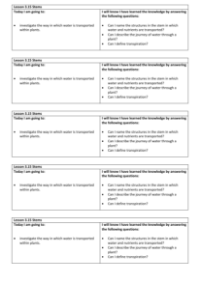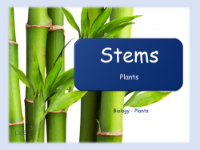Stems - Teacher Explanation

Science Resource Description
Welcome to lesson 3.15 on how water is transported in plants, a topic within the Year 3 unit on plants. This lesson is crucial for pupils to explore and understand the mechanisms through which plants absorb and distribute water to their various parts. A word of caution for health and safety: care should be taken by those with plant allergies, and all pupils should wash their hands thoroughly after handling plants and soil. This lesson not only delves into science but also offers cross-curricular opportunities. In English, pupils might compose a song depicting the journey of water through a plant, while in Maths, they could graph their experimental results. Additionally, a historical perspective could be included by researching the significance of papyrus to the ancient Egyptians.
The lesson's practical activity involves using carnations (or any white-petaled flower), blue food colouring, scissors, a vase, and water to visually demonstrate water's ascent through a plant's stem. Pupils will learn about the crucial role of xylem tubes, which act as the plant's water delivery system. The experiment will show the uptake of the blue dye through the stem and into the petals, and potentially the leaves, depending on the concentration of the dye used. A similar activity with celery and food colouring will help pupils investigate capillary action, the process that allows water to move against gravity through the plant. This part of the lesson includes numeracy by measuring the rate at which water is transported through the celery. The lesson concludes with a creative demonstration using multiple cups and different food colourings to create a colourful display, illustrating the fun side of science and capillary action, which pupils can also try at home. This engaging and educational lesson is sure to leave both you and your pupils eager for the next one.






